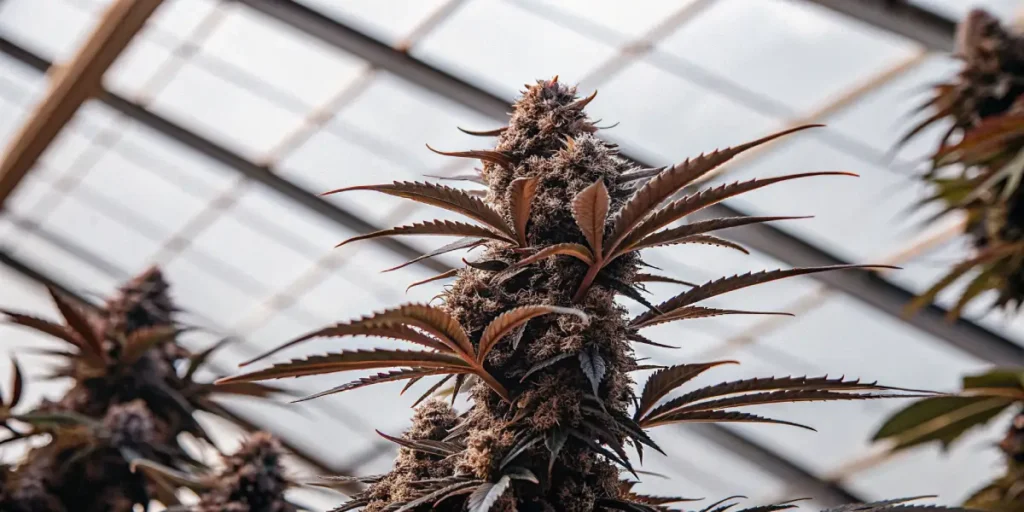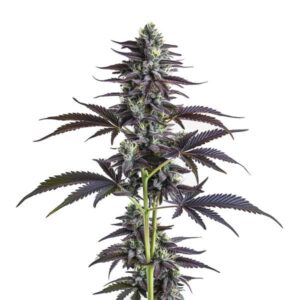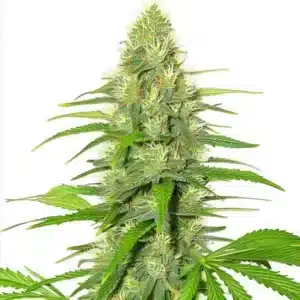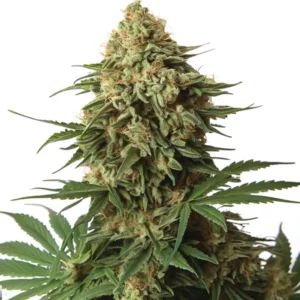
The Role of Cryptochromes in Cannabis Plants
Cryptochromes are a type of protein found in cannabis plants that play a crucial role in sensing light. These proteins are vital for the plant’s ability to grow and thrive. For both novice seed buyers and seasoned growers, knowing how cryptochrome proteins influence cannabis cultivation can be a game-changer.
In simple terms, cryptochromes help the plant determine the time of day, which is essential for its daily cycles. This ability to sense light and dark helps cannabis plants optimize photosynthesis and growth. Without cryptochromes, plants would struggle to coordinate their activities with the external environment.
Recommended Strains
Chemdog #4
|
|
THC | 18% - 26% (Medium) |
|
|
Type | Feminized |
|
|
Yield | Medium |
|
|
Phenotype | 60% Indica / 40% Sativa |
Blue Dream
|
|
THC | 17% - 24% (Medium) |
|
|
Type | Feminized |
|
|
Yield | High |
|
|
Phenotype | 50% Indica / 50% Sativa |
For those growing cannabis, whether for personal use or commercial purposes, knowing how cryptochromes affect cannabis yield can lead to better cultivation practices. These proteins do more than just tell time; they influence various growth processes, affecting the overall health and productivity of the plants.
Cryptochromes Impact on Cannabis Growth
The impact of cryptochromes on cannabis growth is profound. These proteins are part of the plant’s photoreception system, which means they help the plant sense light. They work alongside other receptors to ensure the plant gets the right signals at the right time. This coordination is essential for the plant to grow properly.
Cryptochrome signaling pathways in cannabis are complex but fascinating. These pathways help the plant respond to light changes, such as dawn and dusk, by activating or deactivating certain genes. This process is crucial for the plant’s growth cycles, affecting everything from leaf expansion to flower development.
The Role of Cryptochromes in Cannabis Plants also extends to enhancing their resilience against environmental stress. By effectively managing light reception, cryptochromes enable cannabis plants to better adapt to fluctuations in light intensity and duration. This adaptability is crucial for maintaining steady growth and preventing stress-induced growth stunts.
Moreover, the cryptochromes impact on cannabis growth includes their influence on plant metabolism. By regulating the timing of photosynthetic activity, these proteins ensure that energy is efficiently utilized, reducing waste and promoting sustainable growth. This efficiency not only boosts overall plant health but also allows growers to optimize resource use, including nutrients and water.
How Cryptochromes Affect Cannabis Yield
When cryptochromes function properly, they can significantly boost cannabis yield. They ensure that the plant maximizes its use of available light, which is critical for photosynthesis. Efficient photosynthesis leads to more robust growth and, ultimately, a higher yield.
Growers can take advantage of this by choosing cannabis strains that are known for their sensitivity to light. For instance, the Chemdog #4 strain is known for its vigorous growth and high yield, partly due to its effective use of cryptochrome proteins.
Knowing how cryptochromes affect cannabis yield involves recognizing their role in synchronizing growth stages. By influencing the plant’s internal clock, cryptochromes help ensure that flowering occurs optimally, leading to maximum yield potential. This synchronization is particularly important for strains with specific growing requirements.
The benefits of cryptochrome proteins in cannabis cultivation are also evident in their ability to enhance the quality of the harvest. By promoting vigorous and timely growth cycles, these proteins contribute to the development of potent and aromatic flowers. For commercial growers, this enhancement in quality translates to higher market value and consumer satisfaction.
Promos & Deals
Cryptochrome Proteins in Cannabis Cultivation
Cryptochrome proteins are indispensable in cannabis cultivation. These proteins help manage the plant’s internal clock, ensuring that activities like growth, flowering, and rest occur at the optimal time. This time management is crucial for healthy plant development.
For growers, especially those cultivating indoors, manipulating light exposure can mimic natural conditions. This manipulation allows for better control over the plant’s growth cycles. The Blue Dream strain, known for its adaptability and high yield, benefits from strategic light management to maximize its potential.
Incorporating cryptochrome proteins in cannabis cultivation strategies can lead to innovative approaches to light management. By understanding the precise ways these proteins affect growth, growers can develop custom lighting regimes that align with the specific needs of their plants. This precision in light management is particularly beneficial for high-value strains that demand meticulous care.
Furthermore, the role of cryptochromes in cannabis photoreception highlights the importance of environmental control in indoor cultivation setups. By fine-tuning light cycles and intensities, growers can replicate ideal outdoor conditions, ensuring plants receive consistent signals for growth and development. This level of control is invaluable for maintaining plant health and preventing issues related to inconsistent light exposure.

Role of Cryptochromes in Cannabis Photoreception
In cannabis plants, photoreception is the ability to perceive light and respond to it. Cryptochromes play a central role in this process. They help the plant understand when it’s time to grow, flower, or rest, based on the light it receives.
This photoreceptive capability is especially crucial for outdoor growers who rely on natural light cycles. By choosing strains like White Widow, which responds well to natural light, growers can harness cryptochrome proteins to improve plant health and yield.
The role of cryptochromes in cannabis photoreception is not only about light detection but also about optimizing plant responses to varying light environments. These proteins allow plants to modulate their growth patterns according to changes in light intensity and quality, ensuring that resources are allocated efficiently and growth is sustained even under challenging conditions.
Moreover, cryptochrome signaling pathways in cannabis provide insights into how these proteins interact with other photoreceptors. This interaction is crucial for the plant’s ability to differentiate between light wavelengths, enabling it to adapt to the full spectrum of natural sunlight. Understanding these pathways can lead to advancements in breeding programs aimed at developing strains with enhanced photoreceptive capacities.
Cryptochrome Signaling Pathways in Cannabis
Cryptochrome signaling pathways are the routes through which these proteins communicate within the plant. These pathways are essential for transmitting the light signals the plant receives to the appropriate parts of its biology, triggering specific responses.
These pathways are not only pivotal for growth but also for the plant’s defense mechanisms. By ensuring that the plant follows its natural cycles, cryptochromes help strengthen the plant’s ability to resist stress and disease, leading to healthier plants overall.
Exploring cryptochrome signaling pathways in cannabis can reveal new methods for enhancing plant resilience. By understanding how these pathways modulate stress responses, breeders and growers can develop strategies to bolster plant defenses against pests and environmental stressors, leading to more robust and reliable crops.
Furthermore, research into these pathways can uncover potential targets for genetic modification, allowing for the creation of cannabis strains with tailor-made properties. This could include enhanced growth rates, improved stress tolerance, and optimized light utilization, all achieved through a deeper understanding of The Role of Cryptochromes in Cannabis Plants.
Practical Applications for Growers
For growers, understanding these pathways can lead to practical applications. By manipulating light conditions, one can influence these pathways to optimize plant performance. This might involve adjusting the duration of light exposure or the spectrum of light used in indoor settings.
Using strains that are responsive to light manipulation, such as Chemdog #4, can further enhance these benefits. A well-calibrated lighting setup can make a significant difference in plant health and productivity.
Practical applications of cryptochrome research in cannabis extend to the development of advanced cultivation technologies. For instance, integrating sensor systems that monitor light exposure and plant responses can provide real-time data, allowing growers to fine-tune conditions for optimal growth. Such innovations are at the forefront of modern cannabis cultivation techniques.
Additionally, growers can experiment with novel light spectra that target specific cryptochrome pathways to induce desired plant characteristics. This experimentation may lead to the discovery of light regimes that maximize both yield and quality, providing growers with a competitive edge in the rapidly evolving cannabis market.

Frequently Asked Questions
What are cryptochromes, and why are they important in cannabis plants?
Cryptochromes are proteins that help cannabis plants sense and respond to light. They are a crucial part of the plant’s ability to adapt to its environment. By helping the plant determine the time of day, cryptochromes play a vital role in regulating the plant’s growth cycles.
These proteins are essential for optimizing photosynthesis, which is the process by which plants convert light into energy. A well-functioning photoreception system, supported by cryptochromes, leads to healthier plants and higher yields.
The importance of cryptochromes in cannabis plants cannot be overstated, as they are integral to the plant’s overall development and productivity. By aligning the plant’s internal processes with external light cues, cryptochromes ensure that each stage of growth is executed efficiently, from seedling to harvest.
Furthermore, understanding The Role of Cryptochromes in Cannabis Plants can aid in breeding programs aimed at enhancing specific traits, such as increased yield or improved resistance to environmental stress. By selecting for traits associated with optimal cryptochrome function, breeders can create superior cannabis strains tailored to diverse growing conditions.
How do cryptochromes affect cannabis yield?
Cryptochromes impact yield by ensuring that the plant uses light efficiently. By regulating the plant’s internal clock, these proteins help maximize photosynthesis, leading to more vigorous growth. This efficient use of light translates to increased biomass and, ultimately, a higher yield.
Growers can leverage this by choosing strains known for their light responsiveness, such as Blue Dream. By optimizing light conditions, growers can enhance the effects of cryptochromes and boost overall productivity.
Another aspect of how cryptochromes affect cannabis yield involves their role in optimizing energy distribution within the plant. By ensuring that photosynthetic energy is directed toward crucial growth processes, cryptochromes help minimize waste and maximize output, directly contributing to higher yields.
Besides, cryptochrome proteins in cannabis cultivation are crucial for synchronizing flowering times, an essential factor for increasing yield in photoperiod-dependent strains. By aligning flowering with optimal light conditions, these proteins ensure that the plant can fully capitalize on its growth potential, resulting in more abundant harvests.
Can manipulating light conditions affect cryptochromes in cannabis?
Yes, manipulating light conditions can significantly influence cryptochrome activity. By adjusting light cycles and intensity, growers can mimic natural conditions that enhance the plant’s photoreceptive capabilities. This manipulation can help synchronize the plant’s growth cycles with optimal times for photosynthesis and flowering.
This strategy is especially useful in indoor cultivation, where growers have full control over lighting. By understanding how cryptochromes work, growers can tailor their lighting setups to maximize plant health and yield.
Manipulating light conditions to affect cryptochromes in cannabis offers growers a powerful tool for fine-tuning plant growth. By experimenting with different light spectra and durations, growers can identify the optimal conditions for activating cryptochrome pathways that promote desired growth traits.
Moreover, understanding the cryptochromes impact on cannabis growth allows for the development of dynamic lighting systems that adjust in response to plant needs. Such systems can provide adaptive lighting solutions that optimize growth conditions throughout the plant’s life cycle, leading to consistent and improved cultivation outcomes.
What strains are best for leveraging cryptochrome activity?
Strains that respond well to light manipulation are ideal for leveraging cryptochrome activity. Chemdog #4 is one such strain, known for its high yield and robust growth. Similarly, Blue Dream is favored for its adaptability and responsiveness to light conditions.
Using these strains, growers can experiment with different lighting strategies to find what works best in their specific environments. By doing so, they can maximize the benefits of cryptochromes and improve their cultivation outcomes.
When selecting strains to leverage cryptochrome activity, it’s important to consider those with proven track records of performance under varying light conditions. Strains like White Widow, which exhibit strong photoreceptive abilities, are excellent candidates for optimizing cryptochrome-driven growth and yield.
The role of cryptochromes in cannabis photoreception is also key in determining which strains thrive best in specific environments. Growers should focus on strains that naturally align with their cultivation setup, whether indoor or outdoor, to fully exploit the advantages offered by cryptochrome activity.
What are the future implications of cryptochrome research in cannabis cultivation?
Research into cryptochromes holds significant promise for advancing cannabis cultivation. As we learn more about how these proteins function, we can develop new techniques for optimizing plant growth and yield. This knowledge could lead to more efficient cultivation methods and better-quality cannabis products.
For growers, staying informed about the latest cryptochrome research can provide a competitive advantage. By applying cutting-edge insights, they can improve their practices and achieve better results, whether growing for personal use or commercial production.
Future implications of cryptochrome research in cannabis cultivation include the potential for genetic innovations that enhance plant performance. By identifying key genes involved in cryptochrome pathways, researchers can develop strains with customized growth characteristics, such as increased resilience or faster flowering times.
Additionally, advancements in understanding cryptochrome proteins in cannabis cultivation may lead to the development of new cultivation technologies. These could include precision lighting systems and automated growing environments that optimize conditions based on real-time plant feedback, setting new standards for efficiency and productivity in the cannabis industry.




















